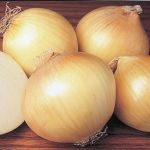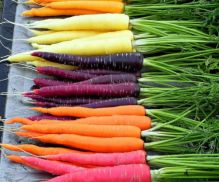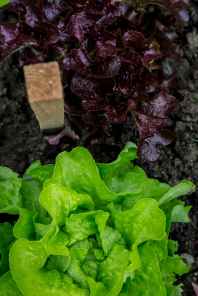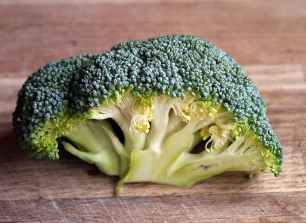We’re in October, you guys! This is my favorite month for a number of reasons. Halloween means costumes, my birthday means cake (I’m a funfetti gal, through and through), and autumn really kicks into gear!
October’s a time of change. Holiday decor starts to make an appearance. Leaves begin to change. Here in New Orleans, the weather finally cools off enough that festival season roars to life.
That said, our high temperatures are still in the 80s (Fahrenheit), so the weather doesn’t exactly feel like the North Carolina autumns with which I grew up.

If I lived further north, I probably would’ve planted my fall garden a few weeks ago. However, one of the lovely aspects of living in a subtropical climate is our winters are very mild. We might see one or two days with a hard freeze, but those typically aren’t until around February. This weather means that I can plant a bit later because the winter growing season is either long or doesn’t end at all.
What am I going to plant?
Well, one plant is already in the ground and has been all summer. My monster eggplant is huge and still producing, so it’ll stay in place until it starts to die back. This is the first time I’ve had such success with eggplant; I’ve planted it once or twice before, but they typically fail before reaching waist height.

The eggplant currently stretches across the entry gate and beyond the boundaries of the garden. I cut it back a little bit so that I could put two-foot-tall poultry fencing at the top of the wooden fence (my younger chickens kept hopping in the garden and scratching around). Eggplants tend to max out at four feet tall. I’m five feet and change, and this beast is taller than me.
Anyway, enough with the monster eggplant. (can you tell I’m proud?)
As I’ve grown more confident with growing, I’ve experimented more with growing from seed. Doing this has a few benefits:
- Plants are cheaper. I get most of my seeds from eBay and spend $1-3 dollars on a packet.
- Unusual varieties are easier to find in seed form.
- Seeds can be bought in advance and planted at your/the weather’s convenience (as opposed to a plant in a plastic carton, which should find a home in the ground or a pot quite soon after purchase).
Of course, many root vegetables like carrots need to be planted from seed anyway. Transplanting them, even as seedlings, can permanently damage the root.
As to the middle point in the list above, I’m not going too terribly crazy this year. This is the first time I’m doing everything from seed, so I’m sticking to more common standards.
Sweet Yellow Spanish Onion

Days to maturity (from seed): 110-115
Size at maturity: 4-6 inch diameter; up to 1 lb in weight
I’ve grown over types of onions before – usually as transplants or seedlings. This will be my first try at growing them from seed!

Carrot Rainbow Mix
Days to maturity: 70-80 days, some varieties up to 120 days
Size at maturity: typically 6-8 inches long, but it can vary
Carrots are one of my go-to winter veggies because they’re easy and dependable. My one mistake is leaving them in the ground too long and allowing them to rot. The mix I’m planting this year includes “Atomic Red, Bambino Orange, Cosmic Purple, Lunar White, and Solar Yellow.”

Heirloom Lettuce Mix
Days to maturity: 45-70
Size at maturity: varies
This mix includes Lolla Rossa, Rouge D’Hiver, Salad Bowl, Red Salad Bowl, and Italienisher.
Snowball Cauliflower
Days to maturity: 70-80
Size at maturity: head is 6-8 inches across, weighs 3-5 lbs
I’ve tried to grow cauliflower from a transplant before, but I wasn’t successful due to pests. I’ll have to keep an eye out this year!

Calabrese Broccoli
Days to maturity: 60-90 days
Size at maturity: head is 5-8 inches across
This is an “heirloom favorite.” Although I didn’t intentionally select heirloom varieties of plants, the idea of heading in that direction appeals to me. Growing heirloom varieties of plants has a romantic connection to the past – but I’ll only keep trying them if they produce.
There will be herbs too.
I don’t plan to plant any new herbs, but the ones I started in the spring and summer are still going strong. At the base of the eggplant, I have chives. In pots, I also grow rosemary, basil, thyme, and parsley. (I was going for the ol’ “parsley, sage, rosemary, and thyme” combo, but I’ve never had success with sage in Louisiana.)
Basil usually dies back in the winter, but the others should keep on trucking, so long as we don’t get a hard freeze.
To be honest, one of the reasons I look forward to autumn and winter is to get a break from the voracious growth of summer. All my gardens in the front and back yard are a lot to tend for one person. Between the daily bright sun and the “wet season” with regular afternoon rain, the weeds tend to go wild.
I’m ready for things to quiet down a bit.

